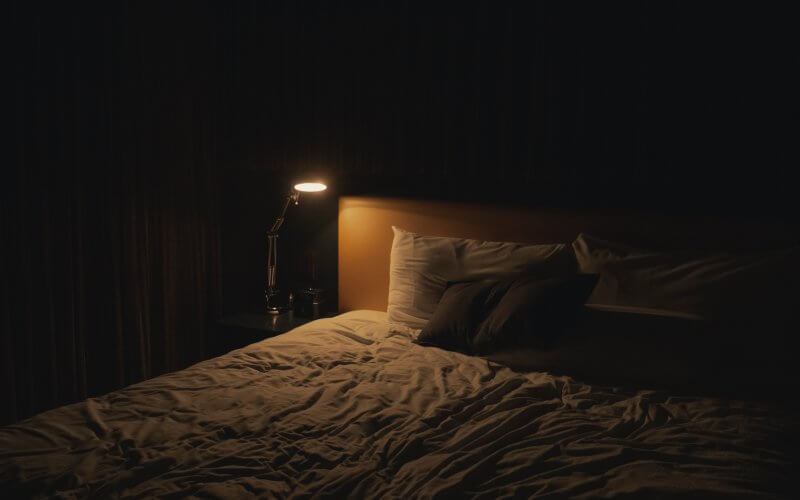CBT-I: Week by Week program

In the previous article in our “CBT Explained” series on Cognitive Behavioral Therapy for Insomnia, we took a look at what CBT-I is, outlining the theory behind the therapy and its four main bricks.
How long is CBT for insomnia?
CBT-I is considered a short therapy and it lasts 6-8 weeks. As you’ll see in this article, each week has a specific purpose and the exercises and program develops in a specific way.
Before we get started, it’s important to mention that just as insomnia varies from person to person. A course of CBT-I is not a one-size-fits-all solution. For the sake of clarity, we’ll take you through a “typical” week-by-week, but bear in mind that CBT-I can vary according to each person. Ok, let’s get started!
CBT-I: Week by Week- Week One
The focus of the first week is Sleep Education. This can be broken down into two parts:
1. Explaining the science behind your sleep.
The general mechanics of your sleep like its cyclical structure and its different phases are laid out. And themes that will come up in later weeks, like sleep efficiency, sleep pressure, and the biological clock are also introduced and explained.
So, why it’s important to know all this stuff? Sleep education can be thought of as unmasking the insomnia boogeyman. By understanding the mechanics of your sleep, it’s in some way demystified, made more manageable. What’s more, this understanding will help keep you focused and motivated in the weeks to come. It will also help you manage your sleep yourself in the long term.
2. Sleep “housekeeping”
The second part is where you lay the environmental groundwork for the rest of the program. Things like: making sure your sleep environment is optimal (the right bedding, curtains, etc..), managing your light exposure (avoiding screens before bed), limiting stimulating substances like caffeine, nicotine, etc…
By learning about and putting in place these measures, you’re giving yourself the best shot at a successful CBT-I. As well as ensuring a healthy sleep routine in the long-term.

CBT-I: Week by Week- Week Two
The 2nd week is where CBT-I gets down to the nitty-gritty, where its two main players; sleep consolidation and stimulus control are introduced.
Sleep Consolidation
Picture the scene, you go to bed around 11pm every night. But you end up tossing and turning, unable to sleep until around 2am. Once you’re finally asleep, you wake up frequently during the night until you have to get up around 7am. This leaves you with pretty fragmented sleep, for the 8 hours you were in bed, you actually slept around 4 hours. The bed or bedroom becomes a source of stress, propagating the vicious cycle of insomnia.
Sleep consolidation, as counter-intuitive as it may sound, is one of the most effective ways to reset this balance. The idea is to break this cycle by first pushing all your sleep into one block then taking it away from your wake-up time to get your new bedtime. So in the example above, if your wake-up time is 7am and your actual sleep time is 4 hours, your new bedtime will be 3am.
Sounds crazy right? But it does work. By pushing bedtime back, sleep pressure is pushed to its maximum, and falling asleep and staying asleep should become easier. Once your sleep is consolidated, bedtime can start to be brought forward to a more reasonable time.
Stimulus Control
Working in parallel with this sleep consolidation, stimulus control aims to continue breaking these negative bed-awake associations and put in place positive bed-sleep associations. This is achieved through a list of guidelines:
- No activity in bed except sleep
- Go to bed only when sleepy
- No naps during the day
- If it takes more than 20 minutes to fall asleep or fall back asleep once you wake up in the night, get out of bed and only return once sleepy.

CBT-I: Week by Week-Week Three
Sleep consolidation and stimulus control continue throughout the rest of the course of CBT-I. Week Three then introduces cognitive ideas to the mix.
This means looking at and starting to deal with the stress linked to insomnia by learning the tools necessary to create a positive bedtime routine. This can be achieved with a variety of methods:
- Practicing relaxation techniques like meditation, breathing exercises or sophrology
- Allowing short but regular moments of calm every evening
- Airing the bedroom before bed
- Laying out clothes for the next day
- Putting pyjamas on.
These can sound like little measures in the face of chronic insomnia, but creating and sticking to regular bedtime rituals have proven to have a positive impact on sleep onset (the time it takes to fall asleep).
In a lot of ways, this positive bedtime routine works in tandem with the stimulus control rules. Whereas stimulus control aims to break a negative association (bed-awake-stress), the ritualization ideas introduced in Week Three aim to create positive associations (bed-sleep-calm).

CBT-I: Week by Week-Weeks Four & Five
Weeks Four and Five are devoted to breaking down sleep-related anxiety, making sure that the road to better sleep is clear. This is done by putting pen to paper and making an inventory of thoughts and worries before bedtime, essentially freeing the mind from anxiety before sleep.
Perhaps you’re skeptical about how effective writing inventories are in the face of chronic insomnia, so we’ve broken down the logic behind these exercises for you:
Fears vs facts
It’s not always easy to spot negative thoughts, especially when it comes to stressful sleep thoughts. Getting into the habit of writing these negative thoughts in a notebook is a necessary first step.
This is often done using a method developed by the psychiatrist considered to be the founding father of CBT, Aaron Beck. Known as a thoughts record, or Beck’s columns, people are invited to write out their fears, thoughts, and emotions, putting them into context; How long do they last? Why do you feel that way? What was happening before the thought arrived?
The insomnia bogeyman
A good way to understand this exercise is to think back to when you were a kid. We all had a moment where we were sure there was a monster in our room, just visible in the dark. It was fear that turned it into the monster. Sleep is kind of the same, something every day that is made stressful and scary. Therefore, listing and rationalizing these fears is kind of like turning the light on.
CBT-I: Week by Week-Week Six
In the final week(s), the program turns to set things up for life post-CBT-I. Making sure that all the big ideas have been understood, any questions answered. Also, that you understand how to consolidate your nights on your own and have a sleep routine.
If after 6 weeks, your sleep efficiency (that’s the time you spent asleep in bed) isn’t satisfying enough, the CBT-I can be continued for 2 more weeks.
The important thing to mention here is that CBT-I can be a difficult experience. It may well be a short course but it is one that is packed with challenging exercises and dense information. Staying focused and motivated can prove tricky, but if you stick with it, the results are there!
This article is part of our series: CBT Explained. You’ll find a list of all the articles in the series by clicking on the link.
Next up: Part 3: Sleep Restriction: What is it and how does it work?
Discover your sleeper profile with this sleep test
Start



